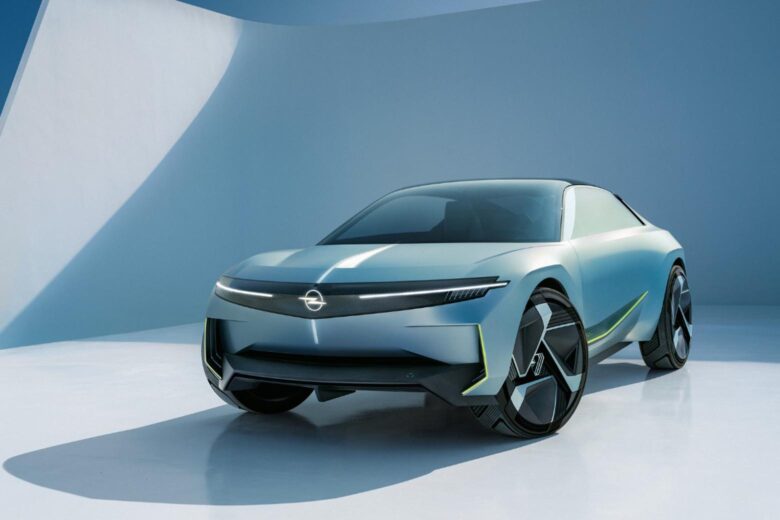At its inception more than a hundred years ago, car manufacturing was typically a local, independent enterprise. As engines and competition heated up, the power of joining forces started to be as clear as the need for high-octane fuel. The Stellantis group is now the icon of international teamwork and unification, joining 14 industry titans under one shared structure.
Although the Stellantis car group is still in its infancy, there’s nothing immature about it.
5.8M
vehicles sold per year
Brilliant leaders are at the helm, world-class engineers and designers are drawing up a storm of innovation, and industry-leading production facilities are scattered across the globe to breathe life into these marvelous machines.
You can find a healthy serving of American brands under the surface, including the popular Jeep SUVs, the powerful Dodge Demons, and robust Ram trucks. These beastly bundles are well balanced with elegant European options, including luxurious Maseratis, stylish Alfa Romeos, and city-friendly Fiats and Peugeots.
At a glance
| Brand | Volume (est.) | % of Group (est.) |
| Fiat | 1,200,000 | 20.8% |
| Jeep | 1,120,000 | 19.4% |
| Peugeot | 1,060,000 | 18.3% |
| Ram | 694,000 | 12.0% |
| Citroën | 645,000 | 11.2% |
| Opel / Vauxhall | 558,000 | 9.6% |
| Dodge | 235,000 | 4.1% |
| Chrysler | 105,000 | 1.8% |
| Alfa Romeo | 50,000 | 0.9% |
| DS Automobiles | 48,000 | 0.8% |
| Lancia | 35,000 | 0.6% |
| Maserati | 23,400 | 0.4% |
| Abarth | 9,000 | 0.2% |
About Stellantis
Although the Stellantis stock has only been on the market for a little while, the large car group is backed by a rich heritage of automotive excellence from all around the globe. The brand’s unity builds at the same time the entire industry shifts forward, with Stellantis carbon neutral goals integrated into every corner.

History of Stellantis
The automotive industry might be full of hardened steel and rigid structures, but becoming one of the world’s largest car companies requires Olympic-level flexibility. The underlying brands and previous ownership structures have blended their past to create a glowing star of the future.
Peugeot brings over two centuries of engineering excellence forward, starting in 1810 with steel manufacturing before creating one of the first steam-powered vehicles. And now it’s seen another wave of innovation as the best electric cars sweep the globe.
Two of the oldest members of Stellantis were an integral part of the early 20th-century American car brands.
The Dodge brothers came together to open a precision machine shop in 1900, and by 1914, the first Dodge vehicle was produced. Chrysler followed shortly after, with the 1925 introduction of a groundbreaking classic car that brought luxury amenities on a medium-priced platform.
Across the pond, two Italian car brands were helping to establish the country as a dominant force in luxury car production. Alfa Romeo and Maserati started turning heads with some of the fastest cars for racing but eventually transitioned into street car production.
From all of these independent starts, the roads began to converge.
The American brands Dodge, Jeep, and Chrysler were formed under the Chrysler Group. At the same time, Maserati, Fiat, and Alfa Romeo had shared leadership under Fiat S.p.A. These two behemoths fully joined to create Fiat Chrysler Automobiles (FCA) in 2014.
In 2021, Stellantis was created through a merger of FCA with PSA Group, backed primarily by the brands Peugeot and Citroën. This Stellantis Chrysler PSA collaboration marks the beginning of a global enterprise that stretches borders and imagination.
Understanding group synergy
The Stellantis group doesn’t have a one-size-fits-all formula that’s spread thin across many brands. Instead, it leverages shared production where appropriate and separates designs to fulfill specific segments.
As you’d expect from a relatively recent merger, most of the separation is easy to identify from the previous structures. And some Stellantis cars within each branch have been sharing select components for decades.
For example, you can find the same EMP2 modular platform under cars with logos from Peugeot, Citroën, DS, and Opel. The vans from these brands also share a chassis.
The Chrysler side of the coin faces a bit more of a challenge across minivans, trucks, and SUVs. But when you sit at the controls, you’ll notice a variety of shared systems, dashboard designs, and small electronics throughout them all.
Then there are some hidden cross-brand Stellantis car platforms you wouldn’t guess. The Giorgio Platform sits under no less than six models, including options from the luxury car brand Maserati, off-road capable Jeeps, and two different Alfa Romeos. It has a range beyond belief.
As Stellantis grows into maturity, it brings forward many luxury SUVs and electric vehicles that will amp up the synergy along with the voltage. Stellantis fuel cell is another alternative energy power source that will use Stellantis hydrogen to diversify its new lineup.
The Stellantis group is working together with companies such as Qualcomm, Amazon, and Foxconn to create a full array of unique systems for its cars. By 2026, the massive international conglomerate expects to use shared electronic platforms and software architecture across its entire 14-brand lineup.
Its goal is to leverage the same research, design, and production teams across potentially millions of vehicles. It is poised to have some of the largest integration that the world has ever seen, at a time when the world welcomes the next generation of cars that decrease carbon footprints to pave the way toward a cleaner, brighter future.












